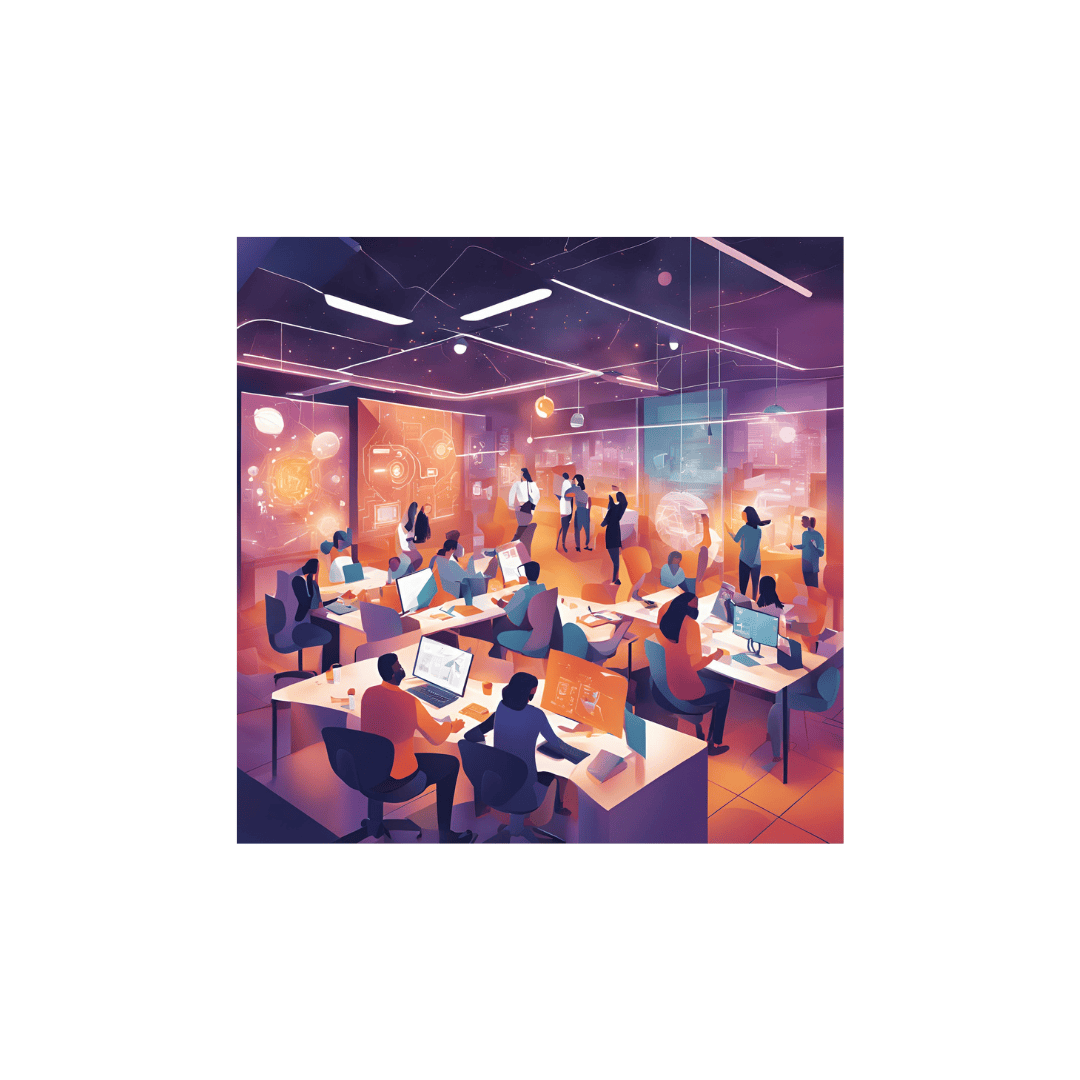Abstract
Service design faces a critical inflection point in enterprise environments. Despite increasing adoption, its ambiguity creates challenges for practitioners who must translate human-centered principles into metrics while navigating complex enterprise realities.
This essay advocates for transforming service design practice—moving beyond "Service Designer" titles toward value-oriented roles like "Value Creation Advisor" that better articulate contributions. Through value clarity assessments, practitioners can determine if organizations truly value the intersection of customer experience, employee experience, and business objectives or prioritize only certain aspects.
The community must expand to include "hidden service designers"—professionals practicing service design principles without the formal title—creating strength through diversity. In enterprise settings, service design evolves from a specialized discipline to an orchestration function, coordinating teams toward value co-creation.
A pragmatic approach acknowledges organizational realities: some successful companies neglect aspects of the value triangle yet thrive. Service designers must meet organizations where they are, focusing on incremental wins while maintaining their seat at the table—particularly crucial for influencing AI development, sustainability & DEI.
Through strategic repositioning and narrative reclamation, service design can navigate enterprise complexity while preserving its human-centered core.

Introduction: Navigating Ambiguity and Enterprise Realities
Service design, once a niche practice, has surged in popularity within the enterprise world (Parsley, 2024) (Service Design Network Dallas Chapter, 2021). However, this increased visibility presents a double-edged sword. While organizations invest in service design teams, a fundamental ambiguity persists: what is service design, and how does it deliver tangible value? The term "Service Designer" remains nebulous, lacking a universal definition (GOV.UK, 2016) (Miller, 2015). This lack of clarity, amplified by the field's rapid expansion, particularly in North American tech and traditional companies, creates a significant challenge. Service designers are tasked with proving their worth to organizations that struggle to articulate its quantifiable impact. They must translate human-centered principles into concrete metrics, such as OKRs and KPIs, while navigating complex enterprise realities: stakeholder ecosystems, rapid technological advancements, and regulatory requirements. (Service Design Show, 2024), (Service Design Show, 2024), (Service Design Network Dallas Chapter, 2021)
This "baptism by fire" demands a critical re-evaluation of service design's role and a bold reinvention of its practices.
I. Acknowledging the Fire: The Case for Catharsis in Service Design
The narratives surrounding service design within enterprise settings increasingly clash with its practical application. Current implementations and measurement approaches fail to capture the nuanced impact of design interventions and the complexity of human experience. Overreliance on quantitative metrics obscures valuable qualitative transformations. Institutional narratives also impose restrictive limitations. Funding models, for example, often confine service design to single business units, stifling its cross-disciplinary potential (Service Design Network Dallas Chapter, 2021). Similarly, associating service design solely with large-scale transformations paints it as slow and ill-suited for agile demands (Service Design Network Dallas Chapter, 2021), (Service Design Network, 2018). This perception risks excluding service design from crucial AI initiatives, precisely when its human-centered perspective is needed. Additionally, service designers are often ill-prepared for diverse enterprise environments. This lack of preparedness, potentially stemming from educational gaps or lack of community awareness regarding enterprise adaptation, leads to struggles in demonstrating value (Service Design Show, 2021). All these factors combine to take an emotional and professional toll on service designers, who find themselves caught between ideals and realities. Voices from the field echo this sentiment, with burnout and disillusionment. (Avila, 2023), (Reddit, 2024), (Service Design Show, 2024). This collective experience underscores the urgent need for catharsis, a deliberate act of burning away the limiting beliefs and restrictive perceptions that no longer serve us, to make space for a more meaningful practice.
II. Reclaiming Professional Identity Through Strategic Repositioning
To thrive in the volatile enterprise landscape, service designers must actively redefine their professional identity. This necessitates moving beyond the limiting "Service Designer" label and embracing value-centric titles like "Value Creation Advisor," "Value Optimizer," or "Value Creation Manager." Such strategic repositioning clarifies expectations and aligns roles with organizational priorities, empowering practitioners to shape perceptions and demonstrate their unique value. This reclamation begins with meaningful engagements and value clarity.
Value clarity requires a deep dive into organizational values, analyzing the interplay between customer, employee, and business needs. By examining relevant documentation (e.g. strategy papers, business cases, project logs (RAID, RACI, PIRs)), analyzing existing metrics, and utilising techniques like stakeholder interviews, employee surveys, service designers can identify discrepancies between stated and actual values. This analysis allows for the categorization of organizations by their "value maturity," enabling informed project engagement. In misalignment scenarios, service designers can either advocate for change, educate stakeholders, or focus on aligned projects, ensuring sustainable and impactful practice.
III. Expanding the Community Beyond Traditional Boundaries
The service design community's growth hinges on recognizing "hidden service designers" within organizations. These professionals, often in non-design roles, intuitively apply service design principles, optimizing processes and improving experiences against the backdrop of enterprise realities (Mansinghka, 2025). Engaging them in service design communities breaks down silos between formal design teams and other value-creating functions. This inclusion fosters innovation and resilience, strengthening the discipline's impact. Within organizations, cross-disciplinary collaboration demonstrates service design's value across functions. Beyond organizational walls, incorporating these professionals into service design communities offers significant benefits, preparing design professionals for enterprise challenges and enhancing value clarity exercises. Given the complex enterprise realities service designers face, involving professionals who have already navigated these terrains is crucial, accelerating integration and enabling impactful results.
IV. Reclaiming the Narrative from Institutional Control
The shift from corporate-dominated design discourse to practitioner-led communities is essential for reclaiming the narrative and shaping the future of service design. Building independent platforms for knowledge sharing and standard setting empowers practitioners to define their own path. Diverse communities can collectively shape a resilient professional identity. Strategies for asserting narrative control in organizational settings, such as storytelling, advocacy, and education, help service designers communicate their value and influence decision-making.
V. Orchestration Instead of Designing
In the complex enterprise environment, service design's role transcends traditional problem-solving. It evolves into orchestration, coordinating diverse teams to achieve unified value outcomes (Service Design Show, 2021) (Reason, 2024). The siloed approach of a dedicated "service design team" fails to fully leverage its potential.
Consider the analogy of risk management in a financial institution. During onboarding, employees are trained to understand that risk management is a collective responsibility. Everyone, regardless of their role, must be vigilant in identifying and mitigating risks. This philosophy should be mirrored in the application of service design within enterprises. The value Venn diagram—customer, employee, and business needs—should be a guiding principle for all employees. This requires a shift to a service design mindset across the organization, making value co-creation a collective endeavour.
The service design definition found on Service Design Network website (https://www.service-design-network.org/about-service-design) must be internalized by everyone.
The service design professional becomes an orchestrator, educating teams and guiding their efforts to be in line with the guiding principle of service design as much as possible within the constraints of an enterprise environment.
Strategic repositioning, such as "Value Creation Advisor," or “Value Creation Manager” enables this by reinforcing collective accountability. This value creation team catalyses adherence to shared value co-creation. This approach facilitates widespread application, moving beyond service-oriented organizations. It clarifies the service designer's role, similar to that of a project manager (but most certainly not the same).
However, service designers must approach this shift with a realistic mindset. Embedding a service design mindset across an enterprise is a gradual process, particularly in organizations with low value maturity. The rise of "disruptive" tech has fostered a culture of rapid growth over profitability, often neglecting organizational efficiency and holistic stakeholder value (Kedia, 2025). When investors demand aggressive growth metrics rather than sustainable profitability, companies focus narrowly on acquiring new customers at any cost—even at the expense of existing customer satisfaction, employee wellbeing, and operational efficiency. Value creation becomes distorted, benefiting a very limited group of stakeholders (primarily investors) while neglecting the broader ecosystem that service design aims to serve. This narrow focus on growth metrics directly contradicts service design's core philosophy of co-creating value across the entire stakeholder spectrum, making it particularly challenging to implement true service design principles in such environments.
VI. Navigating Value Realities
While the ideal of co-creating value for all stakeholders remains a cornerstone of service design, the reality of enterprise operations often presents a different picture. Despite research indicating that customer-centric companies thrive, examples abound of organizations achieving success while neglecting aspects of customer and / or employee experience.
Consider Airbnb, which has faced criticism for poor customer support for both hosts and guests, yet continues to flourish (Kemmis, 2024), (Kim, 2023). Similarly, ride-hailing giants like Lyft and Uber dominate the market despite raising prices and reducing driver benefits (Chang, 2022) (The Guardian, 2018). Tesla, despite facing lawsuits regarding workplace conditions and product quality, maintains strong investor confidence (KIRAKOSIAN, 2022). Meta (formerly Facebook) prioritized user engagement and ad revenue at the expense of user well-being, with whistleblowers revealing the platform's role in amplifying harmful content (Lauer, 2021). Amazon purports to be customer obsessed but has faced criticism for monopolistic practices in Amazon marketplace and on the employee front has shockingly poor warehouse worker conditions (WOODS, 2023) (Muha, 2023) (The Nation, 2025) (Forbes, 2021) (U.S. DEPARTMENT OF LABOR, 2023)
These examples highlight a critical point: some companies choose not to prioritize customer and / or employee values, and they can still succeed. This is where the service designer's role becomes nuanced. If they choose to remain within such organizations, they must adopt a pragmatic approach, understanding that achieving the ideal value intersection is a journey. They must focus on small wins, leveraging change management principles to gradually shift the organizational culture. This approach can lead to indirect benefits.
Maintaining a seat at the table is crucial. Service design needs to prevent its exclusion from initiatives where it is deemed irrelevant or an approach that will slow things down. This is particularly important in the context of rapid AI development, environmental sustainability, and DEI challenges. Service designers can contribute valuable insights, even if the organization's immediate focus is on business value.
Even when organizations prioritize only one or two aspects of value, the orchestrator's role is crucial in bridging the gap between strategy and execution, ensuring that intended outcomes are achieved. This role is essential in enterprise environments, where complex projects often deviate from their initial goals.
By embedding themselves within the organizational ecosystem, building relationships, and introducing tools and techniques, service designers can gradually facilitate a shift towards co-creation of value for all relevant stakeholders. This approach acknowledges that change is constant and that organizations may evolve their priorities over time.
Service design must be practiced in a judgment-free manner. Regardless of an organization's value maturity, service designers must meet them where they are. This requires understanding and accepting the organization's current state, even when it deviates from the ideal.
Communicating the results of value clarity exercises and other findings requires careful planning. C-suite executives, like all humans, are prone to biases (John S. Hammond, 1998). By acknowledging this, service designers can increase their chances of gaining stakeholder buy-in and avoid disillusionment.
However, service designers must not lose sight of their core principles. Maintaining a service design mindset while adapting to the organizational culture is essential. This is where the strategies outlined in Section IV, regarding narrative control, become critical.
Building a strong community, as discussed in Section III, is essential for maintaining control over the narrative and ensuring that the discipline's integrity is preserved.
Conclusion: Embracing Transformation and Collective Responsibility
Any repositioning of service design must be dictated by service design professionals, not by external systemic forces. Increasing service design communities with professionals from non-design job titles is crucial. There is strength in numbers, which also facilitates reclaiming the narrative. The journey of service design is one of constant evolution, demanding adaptability and a commitment to collective responsibility. By embracing transformation and fostering a community-driven approach, service designers can navigate the complexities of the enterprise world and create meaningful impact, ensuring that the human-centered principles of the discipline are realized.
Bibliography
Avila, P., 2023. The Idealistic Service Designer — the part of the journey that no one tells you about.. [Online] Available at: https://medium.com/@p_avila1/the-idealist-service-designer-the-part-of-the-journey-that-no-one-tells-you-about-2bf88944dad7
Chang, S., 2022. Uber & Lyft’s race to the bottom–an opportunity to redefine work. [Online] Available at: https://theflaw.org/articles/gig-economy-and-the-future-of-work-uber-lyfts-race-to-the-bottom-an-opportunity-to-redefine-work/
Forbes, 2021. A Hard-Hitting Investigative Report Into Amazon Shows That Workers’ Needs Were Neglected In Favor Of Getting Goods Delivered Quickly. [Online] Available at: https://www.forbes.com/sites/jackkelly/2021/10/25/a-hard-hitting-investigative-report-into-amazon-shows-that-workers-needs-were-neglected-in-favor-of-getting-goods-delivered-quickly/
GOV.UK, 2016. Service design: Isn’t it just UX with a different name?. [Online] Available at: https://designnotes.blog.gov.uk/2016/10/04/service-design-isnt-it-just-ux-with-a-different-name/
John S. Hammond, R. L. K. a. H. R., 1998. The Hidden Traps in Decision Making. [Online] Available at: https://hbr.org/1998/09/the-hidden-traps-in-decision-making-2
Kedia, A., 2025. The Future Of Startup Valuations: Top Trends Shaping Investment Landscape In 2025. [Online] Available at: https://www.bwdisrupt.com/article/the-future-of-startup-valuations-top-trends-shaping-investment-landscape-in-2025-543879
Kemmis, S., 2024. Unpopular Opinion: Airbnb Has Become Terrible. [Online] Available at: https://www.nerdwallet.com/article/travel/airbnb-terrible
Kim, W., 2023. What happened to Airbnb?. [Online] Available at: https://www.vox.com/money/23941827/airbnb-complaints-guests-cleaning-fee-new-york-regulation
KIRAKOSIAN, M., 2022. ESG funds keep backing Tesla despite lawsuits over working conditions. [Online] Available at: https://citywire.com/new-model-adviser/news/esg-funds-keep-backing-tesla-despite-lawsuits-over-working-conditions/a2385936
Lauer, D., 2021. Facebook’s ethical failures are not accidental; they are part of the business model. AI Ethics, 5 June, Volume 1, pp. 395-403.
Mansinghka, N., 2025. Enterprise Consulting as Service Design: Recognising the Natural Service Designers in Complex B2B Environments. [Online] Available at: https://www.linkedin.com/pulse/enterprise-consulting-service-design-recognising-b2b-neha-mansinghka-olibc/?trackingId=7aNXbppZQK669q9bKMsNKg%3D%3D
Miller, M., 2015. How many service designers does it take to define Service Design?, s.l.: Practical by Design.
Muha, T., 2023. Amazon’s creeping monopoly. [Online] Available at: https://www.michigandaily.com/opinion/amazons-creeping-monopoly/
Parsley, N., 2024. LinkedIn. [Online] Available at: https://www.linkedin.com/posts/niamhmp_the-rise-of-service-design-at-spotify-niamh-activity-7042426230830190593-hbAM/
Reason, B., 2024. Ten years on - reflections on Service Design: From Insight to Implementation. [Online] Available at: https://www.linkedin.com/pulse/ten-years-reflections-service-design-from-insight-ben-reason-kvpye/
Reddit, 2024. [Online] Available at: https://www.reddit.com/r/servicedesign/comments/16cryl2/do_you_think_service_design_as_a_discipline_will/
Service Design Network Dallas Chapter, 2021. The State of Service Design in North America, with Birgit Mager. [Online] Available at: https://www.youtube.com/watch?v=4RaQhLuxmjo
Service Design Network, 2012. About Service Design and the SDN. [Online] Available at: https://www.service-design-network.org/about-service-design
Service Design Network, 2018. SDGC18 | Zachary Jean Paradis: Service Design & Product Management - Friend or Foes?. [Online] Available at: https://www.youtube.com/watch?v=UfEtbLMjJiA
Service Design Show, 2021. The reason why designers fail in organisations / Tricia Wang / Episode #123. [Online] Available at: https://www.youtube.com/watch?v=vfW3OODgD6M
Service Design Show, 2024. A New Approach to Measuring Design's Impact / Stacey Barr / Ep. #212. [Online] Available at: https://www.youtube.com/watch?v=oPcfBQNZltI
Service Design Show, 2024. The Roadmap to Demonstrating Design's Impact / Ryan Rumsey / Ep. #206. [Online] Available at: https://www.youtube.com/watch?v=-rH47AJVeYc
The Guardian, 2018. Uber drivers often make below minimum wage, report finds. [Online] Available at: https://www.theguardian.com/technology/2018/mar/01/uber-lyft-driver-wages-median-report
The Nation, 2025. How Amazon Is Taking Its Union-Busting to New Heights. [Online] Available at: https://www.thenation.com/article/activism/amazon-union-busting-north-carolina/
U.S. DEPARTMENT OF LABOR, 2023. US DEPARTMENT OF LABOR FINDS AMAZON EXPOSED WORKERS TO UNSAFE CONDITIONS, ERGONOMIC HAZARDS AT THREE MORE WAREHOUSES IN COLORADO, IDAHO, NEW YORK. [Online] Available at: https://www.dol.gov/newsroom/releases/osha/osha20230201-0
WOODS, C., 2023. What the US Federal Trade Commission v Amazon case means for Australia. [Online] Available at: https://lsj.com.au/articles/what-the-us-federal-trade-commission-v-amazon-case-means-for-australia/
Written by Neha Mansinghka
Neha Mansinghka is a strategic transformation leader and service design specialist with extensive experience delivering human-centered change across global enterprises. Combining deep user experience expertise with business acumen to reimagine services, processes, and technologies that drive both operational excellence and exceptional customer value without compromising on employee experience.
Links:















Discussion